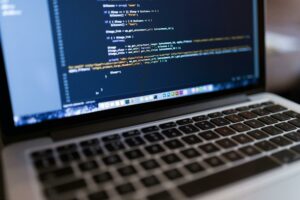Linear actuators are important components for many industrial applications. They provide linear motion that can be utilized to perform very accurate tasks. To achieve high precision in every movement, a control system is needed. Most linear actuators used today are electric. This type of actuator has several advantages over other types like pneumatic or hydraulic actuators.
One of the advantages of electric actuators is the possibility to control them with a high degree of accuracy and precision. There are several options to control electric linear actuators as you can see on this website. The most advanced way of controlling linear actuators is through programming. In this way, one can create automatic solutions that perform well-defined tasks based on the input from sensors.
This type of control is achieved through a so-called programmable logic controller (PLC). A PLC is a computer specifically designed for industrial applications. In general, they are relatively easy to program and highly reliable. Some of the most common PLCs used with linear actuators are:
- Microcontrollers;
- Motor drivers and relays;
- Servos;
- Arduino solutions.
To control a pneumatic or hydraulic linear actuator was challenging. For example, to change the speed of the linear movement, one needed to make changes to the drives. Things changed completely with the popularization of electric linear actuators. One can use a single device. Through programming, one can change the characteristics of the motion it delivers.
Where is this technology applied? Let’s review some of the most common applications.
Industrial Robotics
Industrial robotics is the main application of programmable actuators. In fact, PLCs were invented for General Motors in 1968. Programming allows a linear actuator to be more reliable. The program dictates a well-defined of tasks to perform depending on the input. There is assurance that the device won’t deviate from its programmed tasks.
What’s more, all the movements of the actuator can be very precise. One can program all its positions with a high degree of precision. Using programming helps with fault diagnosis also. Some of the precision tasks that can be programmed in a robot using actuators are the following.
Arc Welding
The use of programmable actuators protects workers from burns and inhalation of hazardous fumes. Usually, heavy-duty robots perform these industrial tasks. Programmable actuators also help to perform other types of welding like spot welding.
Materials Handling
Many materials used in industrial processes are hazardous. Some are dangerous because of high temperature, toxicity, or other reasons. To protect workers, programmable robots can handle, move, pile, or pack such materials. Besides protecting workers, the use of robots reduces operational costs.
Painting
Programming linear actuators for painting increases the quality of the work. The paint coats are also more consistent and uniform. The automotive and other industries use robots to perform this task in their manufacturing lines. Moreover, costs decrease with this technique.
Machine Tending
This process consists of loading raw materials into a machine. Since some materials are hazardous or heavy, robots can do it. To ensure the robot feeds the correct quantities, the linear actuators can be programmed.
Assembly of Products
Programmable robots can assemble final products faster. For workers, it is a tedious task. Programmable robots can do it with high precision if needed.
Finishing Tasks
Some finishing tasks like grinding and polishing can be very time-consuming. Robots can reduce time greatly. One just needs to program the linear actuators to perform the necessary tasks.
Gluing and Sealing
These processes may also be hazardous for workers because of the materials involved. Therefore, a robot can perform these tasks by programming all the movements that the actuators should perform.
Other Applications of Programmable Actuators
Programming widens the span of applications of linear actuators. Programmable actuators can be used to control instruments that require a high level of precision. For example, the control of solar panels and astronomical telescopes can benefit from programmable actuators. Other applications include throttle control in aircraft, marine engine hatches, animatronics, projectors, and many more.
How to Program a Linear Actuator
Engineers don’t need to possess high programming skills to program a PLC. In most cases, the programming requires a graphical programming language. The interface displays schematic diagrams that allow a simple interconnection and programming of a control system. However, other linear actuators may need some BASIC or C coding.
Some microcontrollers like Arduino allow engineers to customize the tasks of the linear actuator. It is one of the most flexible ways to program a linear actuator. However, good programming skills and experience with the Arduino system are necessary. But this way of programming applies to a wide variety of actuators.
Conclusion
The range of applications of linear actuators in industry and other technological areas has increased. Programming a linear actuator offers many more possibilities to perform complex tasks. Programmable linear actuators are essential in many industrial applications.


